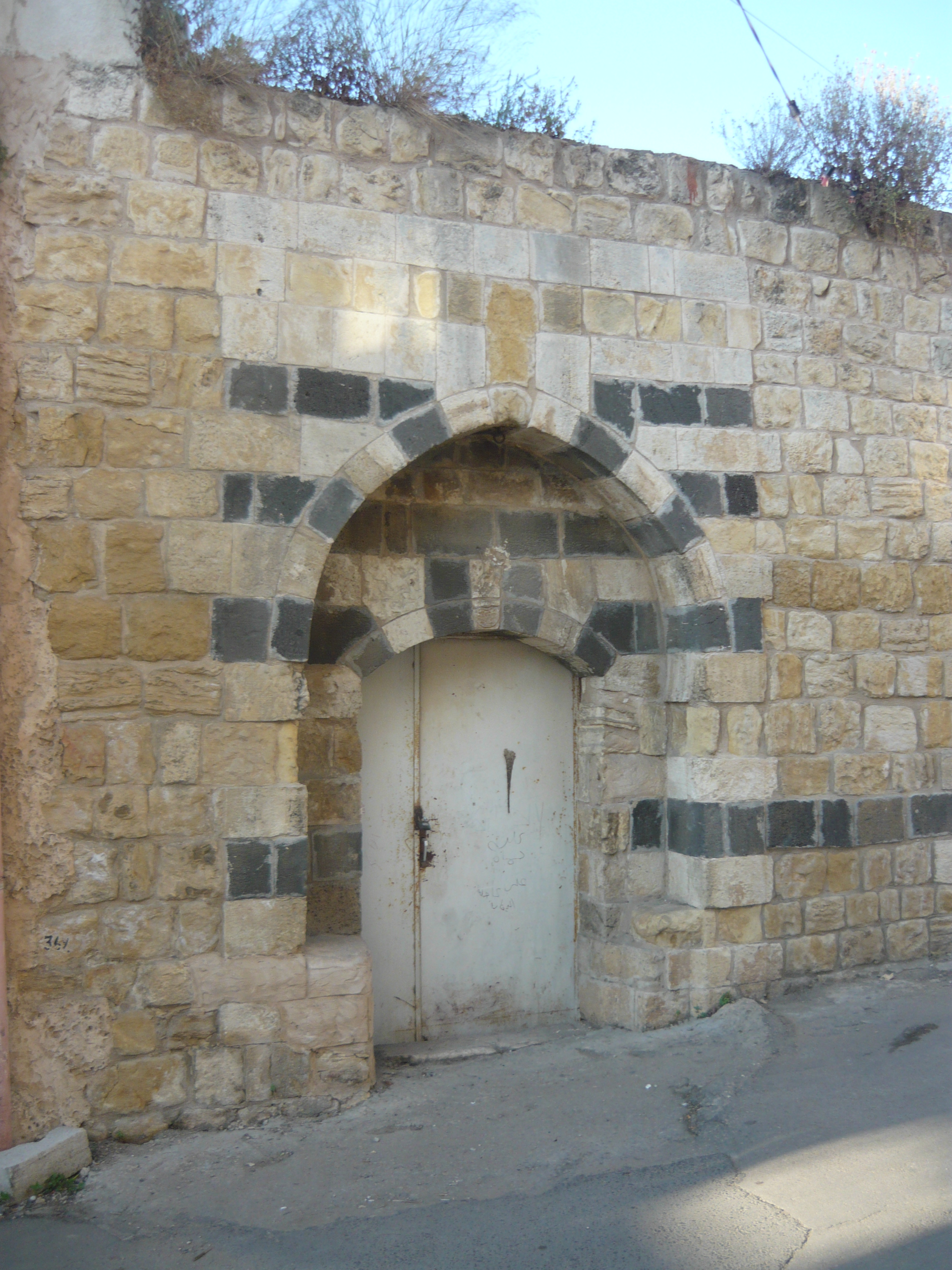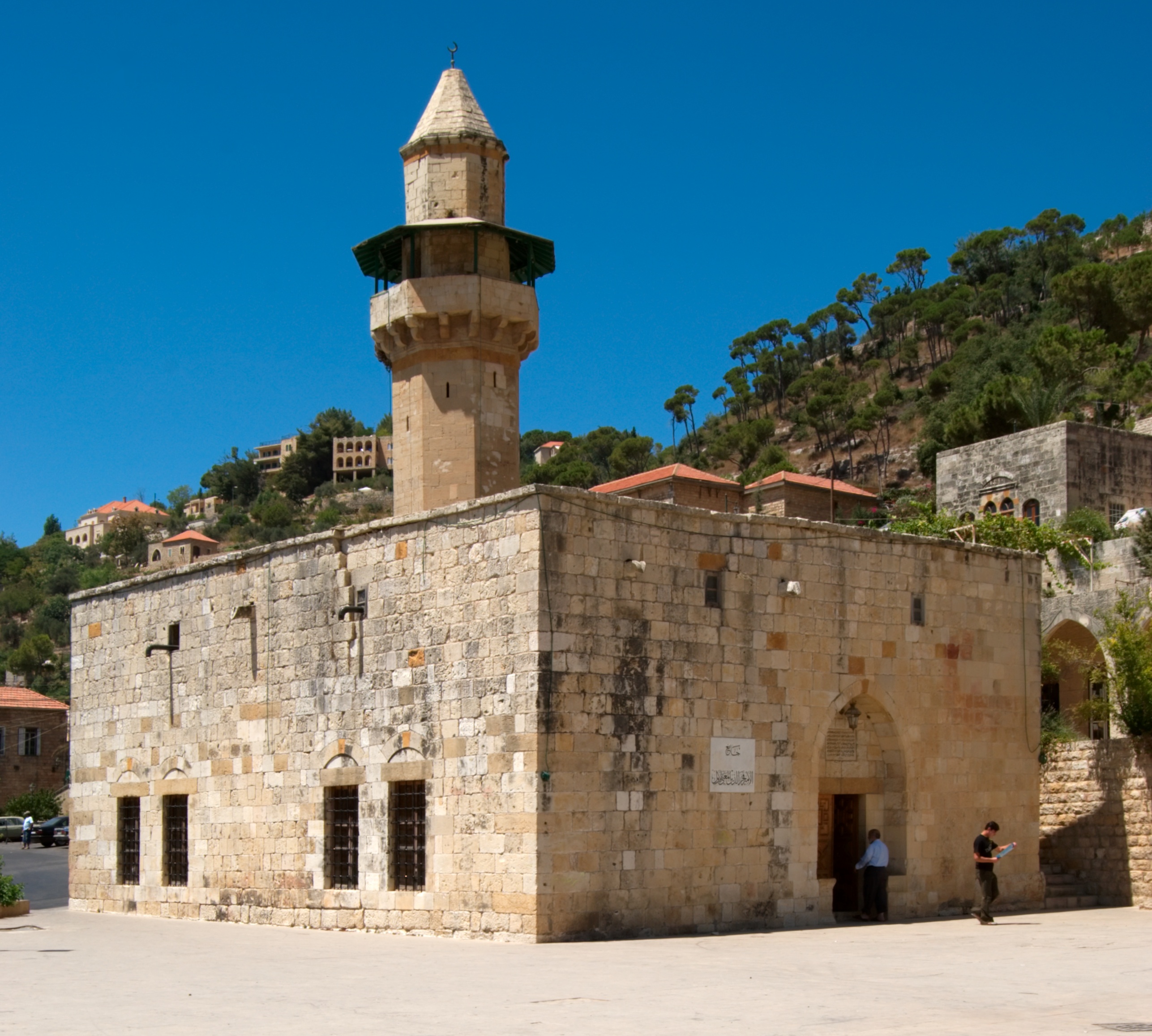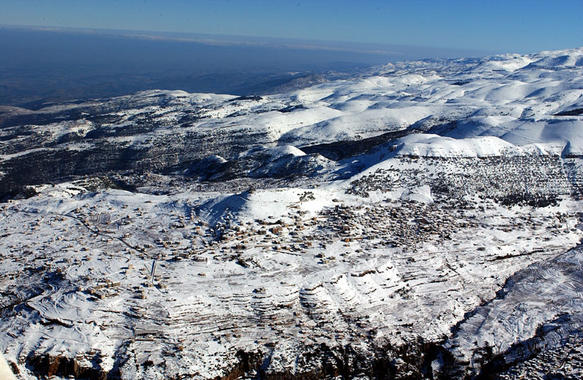|
Zayadina
Al-Zayadina (singular: Zaydani or Zidany, also called the Banu Zaydan) were an Arab clan based in the Galilee. They were best known after one of their sheikhs Zahir al-Umar, who, through his tax farms, economic monopolies, popular support, and military strength ruled a semi-autonomous sheikhdom in northern Palestine and adjacent regions in the 18th century.Joudah, 1987, p. 19. History Origins According to the historian Ahmad Hasan Joudah, the origins of the Zayadina are obscure, but that they were of Arab tribal stock. Members of the clan claim descent from Zayd, the son of Hasan ibn Ali and grandson of Ali, the fourth caliph of Islam. However, the historians Mikha'il Sabbagh and Isa al-Ma'luf assert that the clan's ancestor was a man named Zaydan, hence their name ' anuZaydan' (plural: 'Zayadina'). Some historians speculate that the clan was originally from the Hejaz (western Arabia), and that they migrated to the Levant during Saladin's conquest of the region in the late 12th cent ... [...More Info...] [...Related Items...] OR: [Wikipedia] [Google] [Baidu] |
Zahir Al-Umar
Zahir al-Umar al-Zaydani, alternatively spelled Dhaher el-OmarDAAHL Site Record for Suhmata ''The Digital Archaeological Atlas of the Holy Land'' (DAAHL), accessed 25 Sep 2024. or Dahir al-Umar (, 1689/90 – 21 or 22 August 1775), was an Arabs, Arab ruler of northern Ottoman Palestine, Palestine in the mid-18th century, while the region was part of the Ottoman Empire. For much of his reign, starting in the 1730s, his domain mainly consisted of the Galilee, with successive headquarters in Tiberias, Deir Hanna and finally Acre, Palestine, Acre, in 1750. He fortified Acre, and the city became the center of the cotton trade between Palestine and Europe. In the mid-1760s, he reestablished the port town of Haifa nearby. Zahir withstood sieges and assaults by the Ottoman governors of Damascus Eyalet, Damas ... [...More Info...] [...Related Items...] OR: [Wikipedia] [Google] [Baidu] |
Sallama
Sallama (; ) is a Bedouin village in northern Israel. Located in the Galilee near the Tzalmon Stream, it falls under the jurisdiction of Misgav Regional Council. In its population was . The village was recognized by the state in 1976. History Sallama has been identified as the site of the village of Selamin (Salmon or Tselamon) in the Roman Province of Galilee. At some point between 1688 and 1692, the Zayadina family, who not long before moved to the nearby village of Arraba, had assaulted and destroyed Sallama, whose Druze sheikh controlled the Shaghur subdistrict to which both villages belonged.Firro 1997, pp. 45–46. The Druze subsequently fled Sallama and at least eight other villages in the subdistrict, including Kammaneh and Dallata. At least some of these Druze migrated to the Hauran to join their co-religionists. The Zayadina meanwhile began their influence in the Galilee and gained the tax farm of Shaghur. In 1875, on the top of the site Guérin found the rema ... [...More Info...] [...Related Items...] OR: [Wikipedia] [Google] [Baidu] |
Umar Al-Zaydani
Umar al-Zaydani (died 1706) was the ''mutasallim, multazem'' (tax farmer) of Safad and Tiberias, and surrounding villages, between 1697 and 1706 and the ''sanjak-bey'' (district governor) of Safad between 1701 and 1706.Joudah 1987, pp. 20-21. He was appointed by the governor of Sidon Eyalet, Sidon, Arslan Mataraci Pasha, Arslan Mehmed Pasha, the ''sanjak-bey'' (district governor) of Safad Sanjak, Safad.Harris 2012, p. 114. Umar belonged to the al-Zayadina, Zayadina, an Arab clan that was part of the same Qaisi confederation as the semi-autonomous Chehab family, Shihab ''emirs'' (princes) of Mount Lebanon Emirate, Mount Lebanon. Following Emir Mansour's death, Umar succeeded him as ''sanjak-bey''. Umar was the father of Zahir al-Umar. References Bibliography * * {{s-end 1706 deaths 17th-century people from the Ottoman Empire 18th-century people from the Ottoman Empire Ottoman rulers of Galilee People from Arraba, Israel Zaydani family, Omar 17th-century Arab people ... [...More Info...] [...Related Items...] OR: [Wikipedia] [Google] [Baidu] |
Safed
Safed (), also known as Tzfat (), is a city in the Northern District (Israel), Northern District of Israel. Located at an elevation of up to , Safed is the highest city in the Galilee and in Israel. Safed has been identified with (), a fortified town in the Upper Galilee mentioned in the writings of the Roman Jewish historian Josephus. The Jerusalem Talmud mentions Safed as one of five elevated spots where fires were lit to announce the Rosh Chodesh, New Moon and festivals during the Second Temple period. Safed attained local prominence under the Crusaders, who built a large fortress there in 1168. It was conquered by Saladin 20 years later, and demolished by his grandnephew al-Mu'azzam Isa in 1219. After reverting to the Crusaders in a treaty in 1240, a larger fortress was erected, which was expanded and reinforced in 1268 by the Mamluk Sultanate (Cairo), Mamluk sultan Baybars, who developed Safed into a major town and the capital of a new province spanning the Galilee. After ... [...More Info...] [...Related Items...] OR: [Wikipedia] [Google] [Baidu] |
Tiberias
Tiberias ( ; , ; ) is a city on the western shore of the Sea of Galilee in northern Israel. A major Jewish center during Late Antiquity, it has been considered since the 16th century one of Judaism's Four Holy Cities, along with Jerusalem, Hebron, and Safed. In , it had a population of . Tiberias was founded around 20 CE by Herod Antipas and was named after Roman emperor Tiberius. It became a major political and religious hub of the Jews in the Land of Israel after the destruction of Jerusalem and the desolation of Judea during the Jewish–Roman wars. From the time of the second through the tenth centuries CE, Tiberias was the largest Jewish city in Galilee, and much of the Mishna and the Jerusalem Talmud were compiled there. Tiberias flourished during the Early Muslim period, when it served as the capital of Jund al-Urdunn and became a multi-cultural trading center.Hirschfeld, Y. (2007). Post-Roman Tiberias: between East and West. ''Post-Roman Towns, Trade and Settle ... [...More Info...] [...Related Items...] OR: [Wikipedia] [Google] [Baidu] |
Palestine (region)
The region of Palestine, also known as historic Palestine, is a geographical area in West Asia. It includes the modern states of Israel and Palestine, as well as parts of northwestern Jordan in some definitions. Other names for the region include Canaan, the Promised Land, the Land of Israel, or the Holy Land. The earliest written record Timeline of the name Palestine, referring to Palestine as a geographical region is in the ''Histories (Herodotus), Histories'' of Herodotus in the 5th century BCE, which calls the area ''Palaistine'', referring to the territory previously held by Philistia, a state that existed in that area from the 12th to the 7th century BCE. The Roman Empire conquered the region and in 6 CE established the province known as Judaea (Roman province), Judaea. In the aftermath of the Bar Kokhba revolt (132–136 CE), the province was renamed Syria Palaestina. In 390, during the Byzantine period, the region was split into the provinces of Palaestina Prima, Pal ... [...More Info...] [...Related Items...] OR: [Wikipedia] [Google] [Baidu] |
Qays–Yaman Rivalry
The Qays–Yaman rivalry refers to the rivalry between the tribal factions of Qays–Mudar and the Yaman. The history of the rivalry centers mainly within the armies and administrations of the Umayyad Caliphate in the 7th and 8th centuries, but persisted to varying degrees among the Arabs through Ottoman rule (1517–1918). Membership in either faction was rooted in the genealogical origins of the tribes, real or perceived, which divided them into south Arabian descendants of Qahtan (the Yaman) or north Arabian descendants of Adnan (Qays–Mudar). The tribes which constituted the Yaman, most prominently the Kalb, Ghassanids, Tanukh and Judham, were well-established throughout the Syria (the Levant) since the pre-Islamic period, while the Qaysi tribes, namely the Sulaym, Banu Amir and Ghatafan migrated to northern Syria and Upper Mesopotamia with the Muslim armies in the 7th century. The feud did not effectively take shape until after the reign of Caliph Mu'awiya I (), who, ... [...More Info...] [...Related Items...] OR: [Wikipedia] [Google] [Baidu] |
Dallata
Dallata () was an Arab village, located on a hilltop north of Safad. Constructed upon an ancient site, it was known to the Crusaders as ''Deleha''. Dallata was included in the late 16th century Ottoman census and British censuses of the 20th century. Its inhabitants were primarily agriculturalists, with some involved in carpentry or trade. Dallata was depopulated during the 1948 Palestine war on around May 10, 1948 by the Palmach's First Battalion of Operation Yiftach. Following the establishment of Israel, the Israeli locality of Dalton was established about southwest of the village site. History Dallata was located on the upper slope of a hill, built on the ruins of an ancient occupied site. Excavations have found remains of settlements and agricultural installation from the Chalcolithic and Early Bronze Age.Bron, 2009Dalton, Survey/ref> Tombs had been located in the vicinity. An excavation carried out in 2006 on a location halfway between the center of Dallata and the ne ... [...More Info...] [...Related Items...] OR: [Wikipedia] [Google] [Baidu] |
Kammaneh
Kammaneh (, ) is a Bedouin village in northern Israel. It is the result of the merger between Sawae'd (Kammaneh East) and Kamun (Kammaneh West). Located near Mount Kamun (Jabal Kamun) and to the north of Sakhnin, it falls under the jurisdiction of Misgav Regional Council. In it had a population of . History Kammaneh was founded in the early 19th century when Negev Bedouins began to establish permanent settlements in the Galilee. The Suweid tribe who were one of the first Bedouin tribes to settle in the region found an area atop Mount Kamon (Jabal Kamun) and they named it Kammana or "ambush". They, like most Arabs in the Galilee depended on agriculture for survival. In 1963, Israeli authorities declared Kammaneh or Area 9 as a military training zone endangering inhabitants by stray bullets or mortar rounds. Two years later the village was declared "unrecognized" by the Israeli Ministry of Interior as a part of the Planning and Construction Law. In 1995 the Kammaneh was offic ... [...More Info...] [...Related Items...] OR: [Wikipedia] [Google] [Baidu] |
Safed Sanjak
Safed Sanjak (; ) was a ''sanjak'' (district) of Damascus Eyalet ( Ottoman province of Damascus) in 1517–1660, after which it became part of the Sidon Eyalet (Ottoman province of Sidon). The sanjak was centered in Safed and spanned the Galilee, Jabal Amil and the coastal cities of Acre and Tyre. The city of Safed was made up of Muslim and Jewish townspeople. At the same time the rest of the sanjak was populated by Sunni Muslims, Bedouins, Metouali Twelver Muslims, and Jewish and Druze peasants. Territory and demographics The territory of Safed Sanjak consisted of the area between the Zahrani River in the north to Mount Carmel (near Haifa) in the south, and the area between the Sea of Galilee in the east and the Mediterranean Sea in the west. Besides Safed, it included the port cities of Acre and Tyre and the entire Galilee and Jabal Amil area. The district had a mixed population of peasants and Bedouin. The inhabitants of the Jabal Amil region were predominantly Shia Muslim ... [...More Info...] [...Related Items...] OR: [Wikipedia] [Google] [Baidu] |
Ma'n Dynasty
The Ma'n dynasty (, alternatively spelled ''Ma'an''), also known as the Ma'nids; (), were a family of Druze chiefs of Arab stock based in the rugged Chouf District, Chouf area of southern Mount Lebanon who were politically prominent in the 15th–17th centuries. Traditional Lebanese histories date the family's arrival in the Chouf to the 12th century, when they were held to have struggled against the Vassals of the Kingdom of Jerusalem#Lordship of Beirut, Crusader lords of Beirut and Lordship of Sidon, of Sidon alongside their Druze allies, the Buhturids, Tanukh Buhturids. They may have been part of a wider movement by the Muslim rulers of Damascus to settle militarized Arab tribesmen in Mount Lebanon as a buffer against the Crusader strongholds along the Levantine coast. Fakhr al-Din I (), the first member of the family whose historicity is certain, was the "emir of the Chouf", according to contemporary sources and, despite the non-use of mosques by the Druze, founded the Fakhred ... [...More Info...] [...Related Items...] OR: [Wikipedia] [Google] [Baidu] |
Mount Lebanon
Mount Lebanon (, ; , ; ) is a mountain range in Lebanon. It is about long and averages above in elevation, with its peak at . The range provides a typical alpine climate year-round. Mount Lebanon is well-known for its snow-covered mountains, home to surviving Cedrus libani, Lebanese cedar forests and diverse high-altitude flora and fauna. The name Lebanon itself originates from the white, snow-covered tops of this mountain range. Geography The Mount Lebanon range extends along the entire country for about , parallel to the Mediterranean Sea, Mediterranean coast. The highest peak is Qurnat as Sawda', at . The range receives a substantial amount of precipitation, including snow, which averages around in depth.Jin and Krothe. ''Hydrogeology: Proceedings of the 30th International Geological Congress'', p. 170 Lebanon has historically been defined by the mountains, which provided protection for the local population. In Lebanon, changes in scenery are related less to geographical ... [...More Info...] [...Related Items...] OR: [Wikipedia] [Google] [Baidu] |




